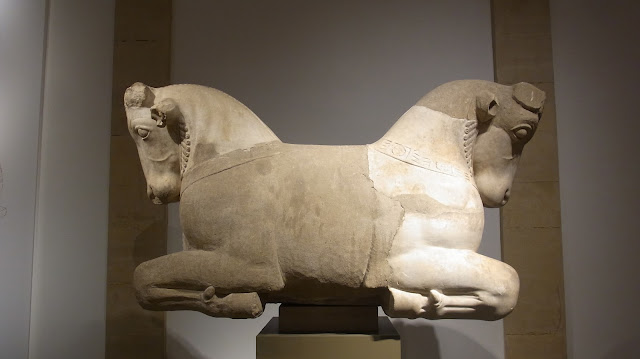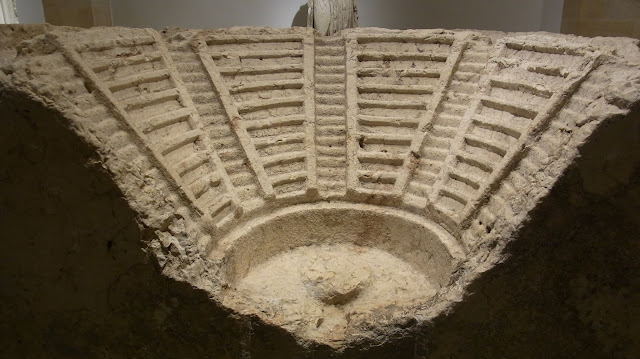 |
| Mosaic of Bacchus, recovered from the ancient city of Byblos (called Jbeil by the bus drivers). Circa 300 A.D. |
Can easily be seen in an hour or two, no-flash photography is welcomed, admission is practically free, and it's just an excellent showcase of the nation's antiquities.
Located directly along the Green Line separating east and west Beirut, the museum was hammered during the war. Some of its artifacts were removed for safekeeping; ones that were too big to remove were sealed in thick concrete shells; others got shot up.
Some of the highlights:
Above, Greek combatants on a 3rd-century sarcophagus from Tyre (south Lebanon, near the Israeli border).
 |
These bulls topped a column in 5th-century B.C. Sidon (midway between Beirut and Tyre).
Model of a theater from Baalbek's Roman period. About the diameter of a bicycle tire.
They say the face is the first thing to go. Don't I know it.
Fourth-century mosaic depicting the birth of Alexander the Great. From Baalbek.
Mosaic of the Good Shepherd's animal pals. The bottom left corner was damaged by sniper fire.
Fifth-century B.C. statuettes of babies from the Sanctuary of Eshmun at Bustan esh Sheikh (near Sidon). They were offered up by parents to the Phoenician god Eshmun in thanks for the healing of their children. They look really Greek-influenced, but Alexander wouldn't be on the scene for another hundred years, so there's a bit of intrigue for you.
Bronze Age figurines.
Reopened to the public just 17 years ago, this is one of the best small museums I've visited and would like to think it is a symbol of what Beirut's regeneration can look like. The curation, presentation and lighting is superb, and everything is labeled in French and English.
Beirut National Museum
Damascus Road, near the Hippodrome
Tuesday-Sunday 9-5
www.beirutnationalmuseum.com
5000 LBP ($3). It's apparently the
only place in Beirut that doesn't accept
U.S. dollars.










Beautiful.
ReplyDeleteVraiment.
Delete